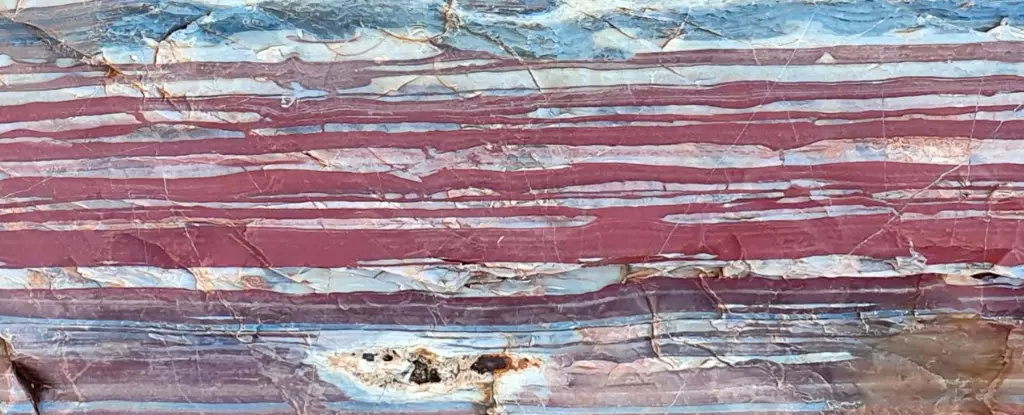Encased within ancient rocks lies a hidden clue about the emergence of life on Earth. Researchers from the University of Western Australia and the University of Cambridge have recently discovered nanocrystals within 3.5-billion-year-old rocks from Western Australia’s Pilbara region. These nanocrystals shed light on the role of phosphorus as a building block of life and provide insights into the formation of primitive RNA at hydrothermal vents on the seafloor. This groundbreaking discovery challenges previous notions and offers a fresh perspective on the origins of life.
At first glance, the rocks from the Pilbara region appear as a combination of fine quartz and hematite, known as jaspilite. However, upon closer examination, scientists uncovered hidden nanocrystals dispersed throughout the jaspilite beds. These nanocrystals, specifically fine particles of greenalite, contain iron, silicon, and oxygen. It is believed that these particles were ejected from hydrothermal vents and precipitated on the seafloor billions of years ago. The presence of nanoparticles within these ancient rocks is remarkable, as they provide valuable insights into prebiotic chemistry.
The Unique Structure of Greenalite
The nanoscale analysis of greenalite revealed an unusual crystal structure. Misalignment between the iron-rich octahedral layers and the silica-rich tetrahedral layers resulted in corrugation on the particle edges. These grooves on the edges create the perfect size for the alignment of biomolecular components like RNA and DNA. As geologist Birger Rasmussen of the University of Western Australia explains, the clay nanoparticles in the rocks act as catalytic tools, facilitating the assembly of biomolecules. This discovery suggests that hydrothermal vents, which have long been considered potential sites for the emergence of life, may have produced trillions of microscopic clay particles that facilitated the concentration and alignment of RNA and pre-RNA.
Hydrothermal vents provide ideal conditions for chemical reactions to occur. These vents constantly circulate seawater through magma chambers, releasing hot plumes filled with nutrients back into the ocean. The extreme gradients created by hydrothermal vents make them conducive environments for many chemical processes. Rasmussen emphasizes that these vents could have served as assembly lines, concentrating RNA or pre-RNA within the grooved clay nanoparticles. The interaction between the minerals and the molecular components of life could have played a crucial role in the early evolution of life on Earth.
Explaining the Prevalence of Phosphorus
One of the perplexing questions in the field of biology is the prevalence of phosphorus in various biological structures, despite its low concentration in the ocean. To address this mystery, researchers examined the 3.5-billion-year-old rocks from the Pilbara region and found nanoparticles of fluorapatite. This mineral contains oxygen, calcium, fluorine, and phosphorus. The presence of fluorapatite suggests that hydrothermal vents might have been an early source of accessible phosphorus. Modeling studies conducted by the researchers suggest that the concentration of phosphorus in deep seawater billions of years ago was significantly higher than it is today. This finding provides a potential explanation for why phosphorus became a key element in essential biochemical processes, such as the production of genetic material, in the early stages of life.
The discovery of nanocrystals within ancient rocks offers a fresh perspective on the origins of life. The unique properties of greenalite and the presence of fluorapatite in rocks from the Pilbara region provide valuable insights into the role of hydrothermal vents in the formation of life’s building blocks. These groundbreaking findings challenge previous assumptions and pave the way for further exploration of the Earth’s early history. By delving into the hidden secrets of our planet’s oldest rocks, scientists are uncovering the remarkable story of how life might have emerged.


Leave a Reply